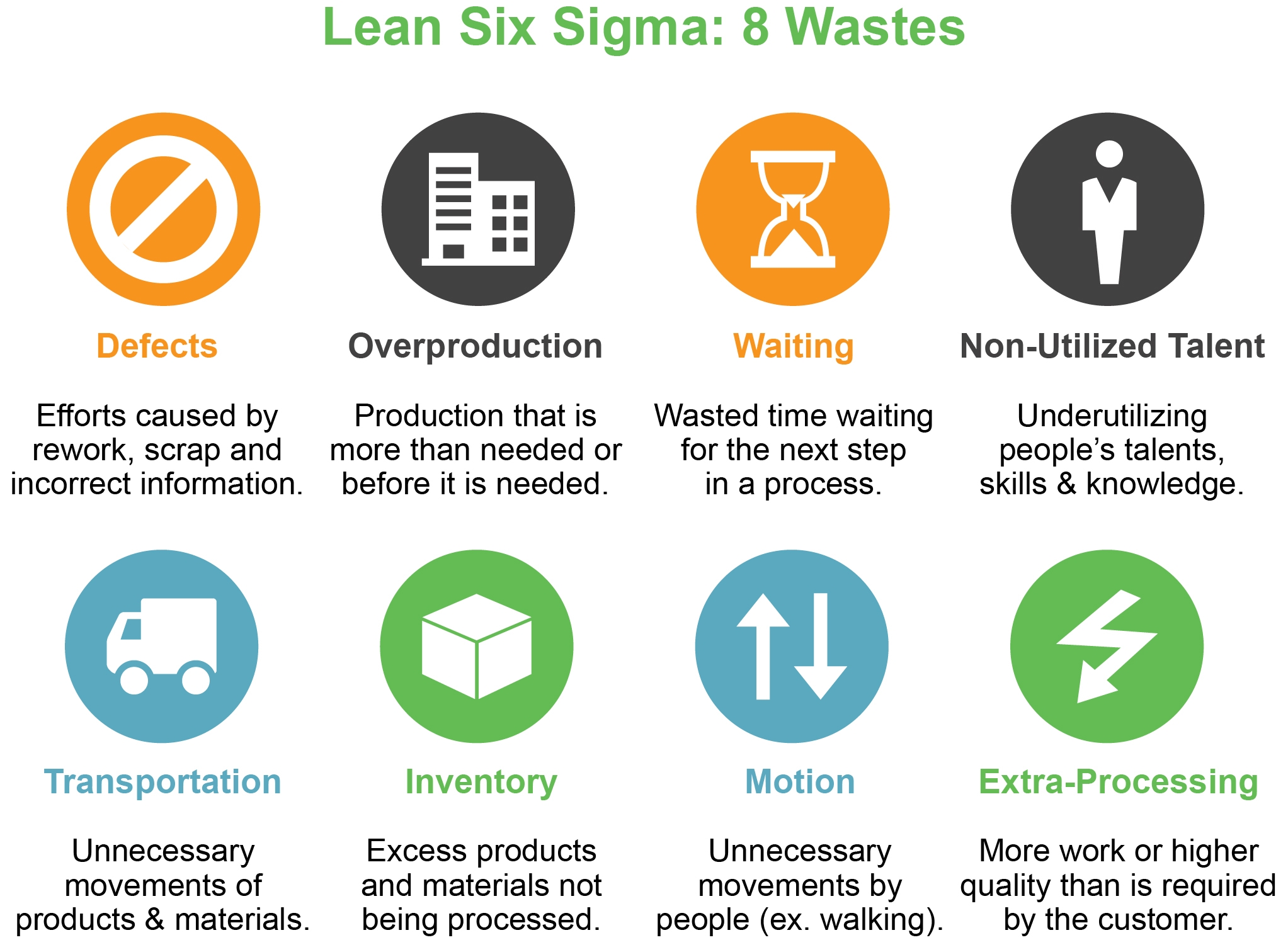
Seven wastes of Lean and how to eliminate them
December 30, 2017
By John O’Kelly

Dec. 30, 2017 – The manufacturing floor is a complex place. Every day simple materials are being transformed into finished goods and shipped all over the world. Waste, in all forms, is one of the biggest adversaries a manufacturing floor faces in their battle to maximum profitability, but what is waste?
The Japanese call it Muda, meaning “futility, uselessness, idleness, superfluity, waste, wastage and wastefulness.” It’s a process that consumes resources. More specifically, it’s when more resources are consumed than are necessary to produce the goods or provide the service that customers want. While many are familiar with the seven wastes of Lean, originally developed by Toyota to improve efficiency, I’d argue there are really eight and they can be easily remembered using the mnemonic D.O.W.N.T.I.M.E.
1. Defective production
2. Overproduction
3. Waiting
4. Non-used employee talent
5. Transportation
6. Inventory
7. Motion
8. Excessive (over-processing)
There are many tactics that manufacturing facilities can implement to combat the eight wastes and add efficiency to their production floor, but where should we begin? What are the strategic plans manufacturing plants can implement to cut down? There are several problem-solving tools that can be used to systematically eliminate waste. Most are likely aware of these tools and systems:
• Value stream mapping
• Pareto analysis
• Cause and effect diagram
• The 5 whys
• Control charts
• The 5S system
• Changeover reduction
The 5S methodology is the best place to start. It’s about having what you need to do your job, when you need it. This philosophy focuses on organizing and managing the workspace by eliminating the eight wastes while improving quality and safety. It focuses on how to organize a work space for efficiency and effectiveness by identifying and storing the items used, maintaining the area and items, and sustaining the new order. The decision-making process usually comes from a dialogue about standardization, which builds understanding among employees of how they should do the work.
The five primary stages of 5S
1. Sort
- Identify all items in the work area
- Distinguish between essential and non-essential items
- Place any non-essential item in an appropriate place, not in the work area
- Regularly check that only essential items are in the work area
2. Shine
- Keep the work area clean and tidy at all times
- Conduct regular housekeeping activities during shift
- Ensure the work area is neat, clean and tidy at the beginning and end of the shift
3. Straighten
- Identify the best location for each essential item
- Place each essential item in its assigned location
- After use, immediately return each essential item to its assigned location
- Regularly check that each essential item is in its assigned location
4. Standardize
- Follow procedures
- Follow checklists for activities where available
- Keep the work area to a specified standard
5. Sustain
- Clean up after completion of job and before commencing next job or end of shift
- Identify situations where compliance to standards is unlikely and take actions specified in procedures
- Inspect work area regularly for compliance to specified standard
- Recommend improvements to lift the level of compliance in the workplace
For proper implementation, it’s important to have good communication from the top down, as well as training sessions and field application.
Good communication ensures the commitment of the entire workforce. Feel free to adapt communication modules depending on the group or division you’re targeting and use various forms of communication and media – such as PowerPoint presentations, interactive webinars and email. The key is to explain the goals and benefits to the entire organization. If this phase does not work, everything else is lost because employees won’t understand the methodology and its advantages; they’ll just see it as more work.
All theoretical development must be accompanied by numerous examples of field application. Practical modules taught by experts on 5S methodology should be delivered throughout the organization and feedback on training sessions should be obtained to make improvements moving forward. The transition from theory to practice must be prompt. Don’t let too much time go by between training and field application, otherwise you’ll lose progress.
All types of businesses benefit from having a 5S program. Manufacturing and industrial plants are the first to come to mind and can realize the greatest benefits. The benefits of implementing the 5S are immense but here’s the best of:
• Improved efficiency
• Increased employee moral
• Standardized work methods
• Improved workplace safety
• A clean, orderly workplace
In manufacturing, Lean is the way of the current times. Streamlining operations to increase profit margins, increase efficiencies, and enable the workforce to become more effective makes good business sense.
Our customers deserve our best, and if we, as an organization, are unwilling to change with the times we all suffer. Decreasing revenues, poor customer service experiences, and strategic losses are the promises of a fixed mindset. With a growth mindset, which is the essence of Lean, revenues will increase, customer experiences will exceed their expectations, and a strategic vision that is durable over the long term will endure.
“Great companies will have strong Lean vision in place with the senior management vision and are working daily at getting on with doing a small number of important things consistently – day in, day out, week after week, month after month, year after year, as part of the middle management action plans. And finally, the results must be visible at the shop floor level. That is what makes for effective Lean leadership within companies.” – TXM, Total Excellence Manufacturing
John O’Kelly is the founder and CEO for Newcastle Systems, a provider of workplace mobility solutions partnering with manufacturers to enhance worker productivity, operational efficiency and organizational profitability.
Advertisement
- Four Ontario manufacturers invest $23M in plant expansion projects
- Arcam EBM moves into new 11,800-square-metre facility